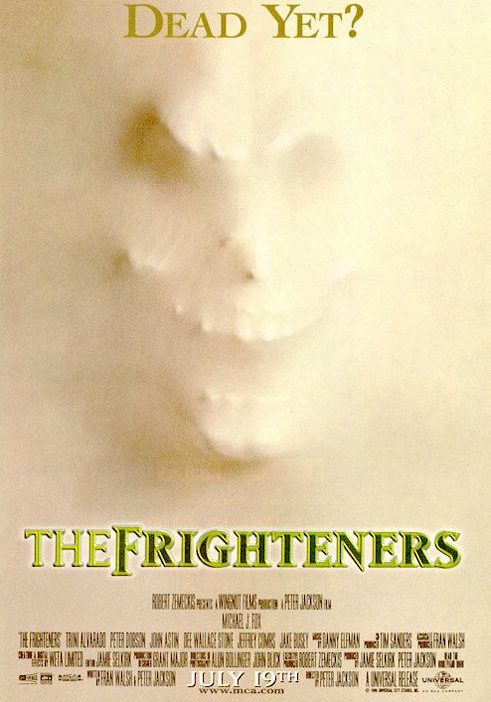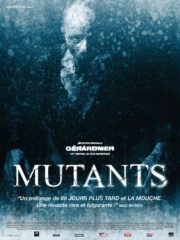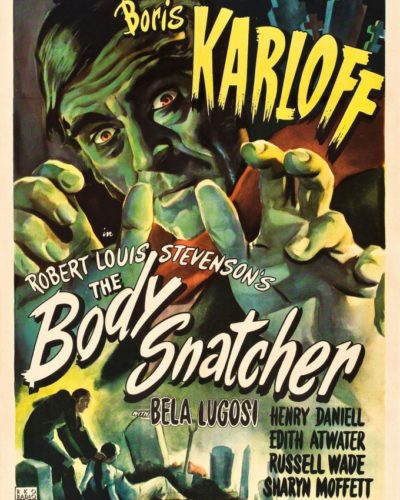From Beyond the Grave: Unravelling “The Frighteners”
“Death ain’t no way to make a living!” – so quips Frank Bannister in the spectral comedy-horror romp that is “The Frighteners,” directed by Peter Jackson before his epic foray into Middle-earth. Released in 1996, the film follows con artist Frank Bannister (Michael J. Fox) who, after a personal tragedy, gains the ability to see and communicate with the dead. Bannister exploits his ghostly acquaintances to swindle local residents by banishing the spirits that he secretly commands. However, when a malevolent specter begins bumping off townsfolk, it’s up to Bannister to put his spook skills to the test in a whole new way. What ensues is a bizarre blend of horror-comedy that showcases Jackson’s pre-“Lord of the Rings” flair for both the macabre and the absurd.
Ghoulish Delights and Ectoplasmic Excitement
The atmosphere and tone of “The Frighteners” teeter on a precarious edge between horror and hilarity. Jackson masterfully intertwines suspense and a palpable sense of foreboding with slapstick and witty banter. This unique fusion affords an unusual horror experience, equally apt at coaxing a shriek or a chuckle. The film’s success at building tension and fear can be largely attributed to its innovative use of visual 90’s effects which, while dated by today’s standards, served its purpose of bringing the macabre and surreal into the sleepy town setting.
Haunting Imagery Meets Ghostly Gags
The cinematography in “The Frighteners” errs towards the functional rather than the artistic, placing greater emphasis on special effects than on nuanced visuals. Lighting swings from the overtly eerie—shadows and silhouettes—to daytime clarity where the most mundane settings become a backdrop for supernatural chaos. With camera angles and CGI that were groundbreaking for their time, the visual storytelling oscillates between reality and an otherworldly experience, particularly in the depiction of the spectral antagonist. When paired with Danny Elfman’s score, chilling and unearthly, the film conjures an audio-visual ambience that distills both dread and mirth in equal measure.
A Symphony of Shivers and Laughter
The film’s soundtrack and sound effects become characters themselves, weaving tension into the narrative fabric. Elfman’s distinctive style—think whimsical with a dark twist—complements the film’s horror-comedy aspiration perfectly. Sound editing plays a meticulous role, using silence as effectively as sudden, jarring noises to puncture moments of audience comfort.
An Ectoplasmic Ensemble Cast
Michael J. Fox delivers a compelling performance as a man tormented by lost love and his ability to mingle with the dead. The characters are sketched with enough complexity to avoid becoming mere caricatures, despite the film’s comedic undertones. The supporting cast, including the spirits played by Chi McBride, Jim Fyfe, and John Astin, add depth and eccentricity, complementing Fox’s earnestness with their other-worldly charm. Together, the ensemble drives the narrative forward, anchoring the bizarre occurrences to a semblance of plausibility amidst the unfolding madness.
Fear by Any Other Name
“The Frighteners” dabbles with a variety of horror tropes—ghostly visitations, a grim reaper figure, and a twist on possession narratives—but it’s the psychological unraveling of the characters that lends the film its suspense. The horror elements are injected with satirical comedy often, creating an amalgam that challenges traditional genre constraints. Jackson’s approach leans more towards supernatural shenanigans than gore, with fright tactics grounded in startling revelations and a narrative that careens between the dead and the living.
Deeper Than a Grave
Behind the frights and fun, “The Frighteners” touches on themes of loss, redemption, and the inevitability of death. Jackson manages to layer his spectral tale with an exploration of grief and the human tendency to exploit and manipulate. This subtext offers a richer narrative, positioning the film as a contemplative piece beneath its entertainment veneer.
Final Appraisal: Haunt or Jaunt?
While “The Frighteners” may not provoke night terrors, it succeeds at being a consistently engaging and original addition to the horror-comedy genre. The film is a funhouse mirror—distorted and exaggerated—but reflecting enough genuine emotion and creativity to appeal to both horror enthusiasts seeking a lighter touch and casual viewers craving a supernatural diversion.
Fans of Peter Jackson’s early splatstick films like “Dead Alive/Braindead” or “Bad Taste” will appreciate the director’s quirkier inclinations, though those expecting the raw horror those films delivered may find “The Frighteners” tamer in comparison. Nonetheless, it remains an entertaining spectacle worthy of a cult following and deserves a spot among the idiosyncratic entries of horror cinema.
Recommendation: With its PG-13 rating – by virtue of some comedic gore and ghostly antics – “The Frighteners” is a palatable choice for teens and adults. Be warned, however, that some moments may still jolt the faint of heart. Whether you’re in it for the laughs or the chills, this film delivers a delightful dose of both, assuring that Peter Jackson’s paranormal escapade is well worth the watch.




